From Telly to TikTok: Australia’s Media Time Warp
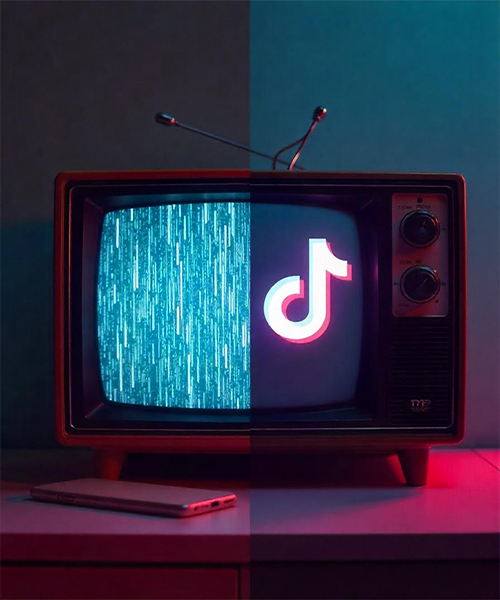
Author – Devavratha Shetty N
Before I take you forward and backward in time, like in the movie Tenet, bombard you with insights on Australian Media impersonating our current media scenario, some rhetorical questions?
I know Q&A sessions are usually kept in the end, well.. Surprise!
- Imagine walking into a dark cave wearing a head torch to remind yourself of what you read last week as news.
- Imagine hearing about the latest news from a neighbour and then asking about that very same thing to everybody you run into to check if it’s legitimate or not, until you find a big enough sample size to conclude if it’s true or false.
- Imagine you’re great at one particular hobby/profession/activity and you’ll have to show it to everybody on a daily basis by physically doing the exact thing the exact way of how you did it the first time to get famous.
- Imagine traveling to the nearest weather report centre to get a vague idea on how the weather would be like.
- Imagine you’re starting up with an international brand, and you’ll have to hire influencers all over the world by physically travelling there, so that you get to see the demonstration of how well they can promote your brand, and hiring them by just trusting them with their word that they have a huge number of followers (like literal followers, the ones Jesus had) that can be easily influenced.
- Imagine your favourite sport being played in another part of the country, for which you couldn’t get the tickets to, and you’re sitting in your living room with a phone in your hand waiting for your friend, who’s witnessing the sport live, and hoping he’d describe it to you just the way he/she is witnessing it.
If you can’t even comprehend what that would be like, Thank a ton to the Media. Where the sun doesn’t reach, the media does!
But when it comes to the media in general, there are an equal set of pros and cons! A debate about it surely sounds worthy, but not today! The media today does it for us anyway, although… I’d like to sum up the debate about pros and cons with a few legendary quotes!
“Whoever controls the media, controls the mind.” – Jim Morrison
“With great power comes great responsibility.” – Voltaire (popularized by Spider-Man)
“The ability to control information is the key to power.” – Joseph Stalin
“The media is like a megaphone. It amplifies both the best and the worst in society.” – Barack Obama
Although it’s upto you to decide which one’s positive and which is negative, these quotes generally sum up people’s perspective on media over the generations.
Before we get into the The Good, The Bad & The Ugly side of media in Australia, imagine Morgan Freeman saying this for more dramatic effect:
Now, let’s unearth the Australian Media, shall we?
The TL;DR Down Under!
Do read though!
What kind of media do Aussies consume?
What keeps them informed, what fuels their zoom?
What do they scroll in an endless spree?
News, footy, memes, and reality TVs!
Now comes “the Tenet part” that I mentioned in the very first line of this blog.
For readers who don’t get the reference, let me sum it up Tenet in 3 words: Watch Tenet Today!
Newspapers aka Fish Wrapper

Then: During the 19th century, somewhere around 1803, the very first Aussie newspaper The Sydney Gazette and New South Wales Advertiser was established, and thus began the rise of Australian print media.
Now: The Australian newspaper market is well… on a downhill. No wonder Aussies call it the Fish Wrapper. In spite of a good number of robust readers, mates and sheilas prefer digital circulation (FYI: In the case of digital publications, circulation is calculated based on the number of downloads or unique visitors to the website). And this surge in digital readership has led to publications incorporating paywalls via their websites and apps.
Radio aka The Wireless
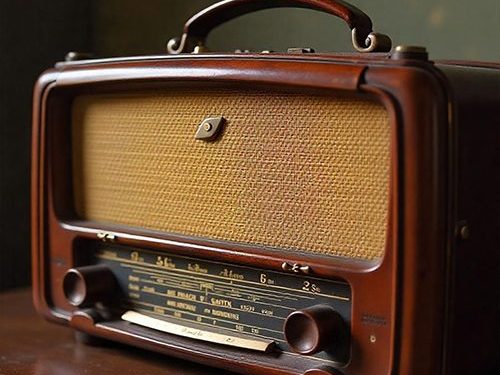
Then: In 1919, Ernest Thomas Fisk arranged for the National Anthem to be broadcasted from one building to another. From broadcasting the anthem to growing to be drivers’ oldest companion, the radio has surely stood the test of time. And the year 2023 celebrated 100 years of licensed radio transmission in the land down under. The math doesn’t add up, eh? 1919-2023= not 100. Well, look back at the highlighted words in the paragraph.
Now: Radio is… sort of like the Indians, despite several invasions, loot, and ransacking (with respect to the Indians), and competitions, technology, and change (with respect to the radio), both have stood strong… still reigning. I can hear both of them say *impersonating Arnold Schwarzenegger* “I’m old, not obsolete”.
Close to about 16 million Aussies listen to radio to this day, despite social media and mobile phones having replaced 50% of the devices that were specifically used for specific purposes, like watches, compasses, walkmans, and so on. (People whining about the current existence of watches referring to smart watches, hold on! Please don’t tell me that a phone on a wrist is a smart watch. It’s just a smart-er phone!) Why do most Aussies prefer radio?
A recent survey showed that the younger generation find radio to be a medium that plays regional and local tracks composed and sung by local artists! Aww..now, that deserves an applause!
Television aka The Telly
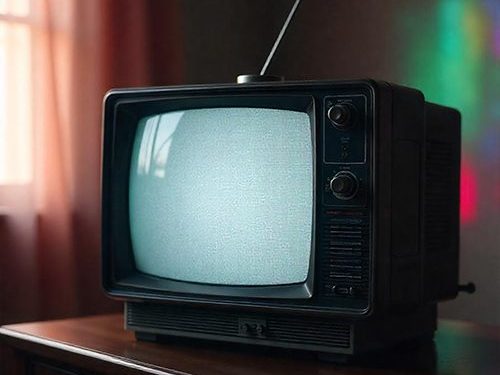
Then: Well, well, well, the telly was introduced to the land down under in 1956 in the monochrome version. And soon enough, in 1975, the colour telly was introduced, nearly 10 years after it was introduced in most of the countries? Why the delay? The long-lasting heatwaves intercepted the radio waves perhaps.
Now: From “Good evening, and welcome to television”, the very first words uttered on Australian TV, to rising to the golden ages and witnessing the moon-landing LIVE, Australia did take time in bringing down the coloured TV to their land, but they made up for the delay by purchasing it like no other country did. If you’re wondering the pace of purchasing, then let me give you a reference. It was faster than Harry Koos and Jake’s, Aussie mates, record-breaking pub crawl (99 bars in 24 hours). No clear reference as such, just wanted to promote this legendary record.
The paid television phase also telecasted the Gulf War and the Vietnam War in specific channels. And I thought only social media influencers existed, talk about TV influencers, eh!
Internet aka The Net
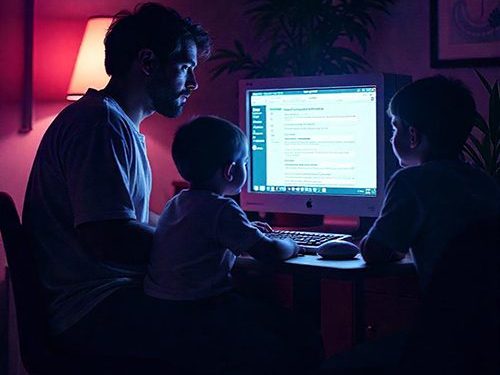
Then: Mosaic, the first browser that integrated text and graphics, was launched in 1993. Soon after this, the public internet was born, somewhere around 1994. If you’re wondering about newspapers now, well.. In 1995, the Age Online was the first newspaper website in Australia. Heads up, applause time! Age Online beat New York Times in a year since its inception. I have nothing against the NY Times, just that when the local hero wins, there’s some ring to it! This, my dear mates and sheilas, was the golden age of the Internet.
Now: *Enters: Social Media*
82.7% Australians were reportedly active on social media as of February 2022.
Facebook leads the social media arena in Australia with 78.2% user penetration as of 2024.
With Instagram, 24.08% users were females and 21% were males, again as of 2024.
With Snapchat and TikTok, 59% were females and 57% were males, as of 2..0..2..4.
40% of Australians use social media to access essential news.
And these stats are only bound to increase or rather fly! This pattern and prediction has led to a revolution, a legendary revolution!
The Nerfing


In November 2024, Australia pioneered a law that prohibits children under 16 from accessing and using TikTok, Facebook, Instagram, Snapchat, and Reddit, with or without parental consent. This law is directed towards the rising concerns over youth mental health, and a survey revealed that 77% of Aussies support the ban. Make it 77.1%, I’m in on it too.
Below are some of the headlines that the local and national newspapers printed before and after the ban. Just to help you relive it!
Why the nerfing? Well…
“Social media companies have no ‘moral lens’: Dutton” – The Australian
“‘Criminal’: Crackdown on social media giants” – news.com.au
“Australia’s under-16 social media ban sparks anger and relief” – Reuters
“Social media bans for teens: Australia has passed one, should other countries follow suit?” – The Guardian
The Art Of Phubbing

What’s phubbing? Hmm.. Have you ever snubbed someone in a social setting by looking at your phone instead of paying attention? Congratulations! You’re a phubber.
There could be a gazillion reasons for doing so. It could be to prevent an awkward-silence situation or boredom, or God forbid, it could be because of the shortened attention span!
Aussies are facing acute addiction to social media!
Now you wish the newspaper and radio era prevailed, don’t you?
Above all the criticism that Apple is already facing, two of Apple’s shareholders, the names can’t be disclosed, kidding, JANA Partners LLC and the California State Teachers’ Retirement System, have written an open letter to Apple requesting them take extra care regarding teen technology addiction.
Disclaimer: The content below will make you contemplate your phone usage, which may lead to damaging your phone in one way or the other. Therefore, read with caution!
Aussie social media users spend close to 2 hours per day on social media, and that’s not all, and use 6 different social platforms every month.
And who’s taking advantage of this? Brands!
Brands are spending more than $US520 million on influencer-led ad campaigns.
Aussies spend maximum time on TikTok, with Android users spending an average of 38 hours 51 minutes per month on TikTok. I suppose that’s why the application is named TikTok, indicating the clock’s ticking sound.
Snapchat, on the other hand, has a log-in average of 490 times per month, or rather, 16 times per day. And Aussies clock-in an average of 16 hours 26 minutes per month on Snapchat. Phew!
And based on a study by ABS, Aussies usually have 5 hours 13 minutes of free time. Now do the math!
YouTube and Facebook are the reigning champions in Australia, when it comes to popularity.
A study shows that in 2025, marketers are uppity to spend $US4.26 billion on social media advertising to Australians.
Wait, self-realisation time!
Somalia: Approximately $4.7 billion USD
Eswatini (Swaziland): Around $4.7 billion USD
Sierra Leone: Close to $4.1 billion USD
I bet you’re thinking, “It’s not that bad when other countries are doing it as well.” Well, it’s the worst! The above stats are the GDPs and not the expenditure amount for social media advertising.
Getting back to the Lockdown on social media. The reasons for nerfing doesn’t end there! The most dangerous reason of all: MISINFORMATION!
A recent survey by KnowBe4 found that 44% of IT leaders wrongly identified scam emails as legitimate and more than half wrongly marked legitimate emails as fake.

And therefore, thereby, and hence, the Nerfing!
The amount of news and health-related advice we consume from social media is magnanimous, how do we segregate legitimate from fake? I guess the solution for this is: Fact checking must be mandatory on all media-related platforms, and spreading misinformation must be considered a criminal act. When it comes to health-related advice, abandon social media, and if you’re blessed enough, consult your grandparents! They know the best!
Advertising aka The Reckonings
Then: Some blast from the very past (1790s- 1990s)!
The very first advertisement in Australia was for a 1796 theatre show. From there, advertisements were limited to trade cards and newspapers! Monochrome advertisement largely prevailed with greater reliance on imagery. Once the first World War broke, advertisements were used to inform and influence the public.
Soon after this, the federal government poured in a ton of money to advertise Australia as a land of opportunity and sunshine. Well, a lot of sunshine. Women were mainly targeted inorder to market fashion.
Post the second World War, colourful ads surged, promoting beauty products and contraptions to prevent double-chins. I mean, the world was recovering from another World War, and obviously, double-chins need to be prevented first. Women were showcased in a domestic setting and men were showcased to be strong, reliant, and independent. The Andrew Tate era, I suppose!
And celebrity endorsements began. In the blink of an eye, tobacco advertising boomed and doomed within a couple of decades. The 1990s advertising arena was dominated by television and magazines.
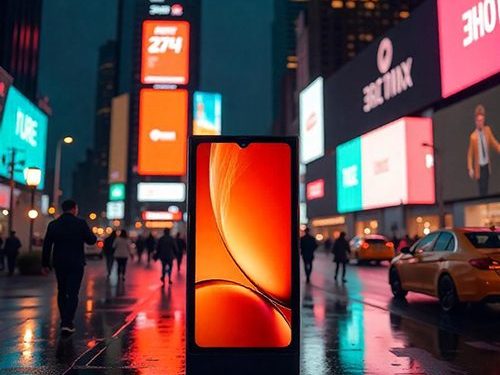
Now: The advertising today can be split into two categories: Traditional and Digital media advertising. Although advertisers prefer traditional media, such as television, newspapers, and magazines, for marketing, a lot of traction and revenue is on the surge with outdoor digital display ads. Proctor and Gamble was the highest spending digital advertiser in Australia ahead of Hungry Jack’s and leading supermarket chain, Woolworths.
Here comes the dilemma.
The automotive industry spent a really huge amount on advertising in television and newspapers than outdoor digital displays, and so did the finance and tourism industry. However, from the last few years, these very industries have been significantly increasing their spending on digital advertising mediums.
So, which way is the highway?
Hardware giant, Bunnings, has begun rolling out 300 large in-store LED screens throughout its chain of hardware stores. This move was inspired by Australian retailers, such as Woolworths Supermarkets and Coles Group.
This Bunnings retail media program is expected to lure in hardware suppliers who will pay to advertise on them, which will be strategically placed around Bunnings stores. The screens will display a mixture of supplier advertisements and Bunnings campaign messages. Apart from Bunnings, several large retailers have also developed their advertising businesses.
Woolworths created its own advertising division called Cartology, Coles developed Coles 360, and Chemist Warehouse operates its media sales arm called Strat.
Are we evolving backwards? Or is this a smart move?
Coles 360 booked a 20.5 per cent increase in media income in 2024 and Chemist Warehouse’s retail media businesses generate around $600 million annually. Checkmate indeed!
Cue the fanfare!
That’s A Wrap!
Media, in general and inclusive of all formats, plays a vital role in many ways. It unintentionally structures an entire country and its citizens. It shapes perception, bombards information, and in some ways, is capable of uniting or dividing a country. Australia and its history with media has clearly shown how the adaptation of evolving media must be restrained in some ways to avoid a negative impact on society and its children. The culturally and economically advanced country has pioneered the steps that need to be taken to curb the negative side of social media in particular. This drastic step, in my view, must be followed to the beat in every other country. They say “Too much is too less,” well, the Australian Bigwigs, on a serious note, felt “Too much is too much indeed.”
But exactly how much is too much?

A penman aspiring to craft timeless stories! Wordy, yet monosyllabic! A scriber dangling between brevity and verbosity! A narrative writer longing to master consciousness narrative. On the contrary to my multipotentiality, the scripophily in me has echoed perpetually.

